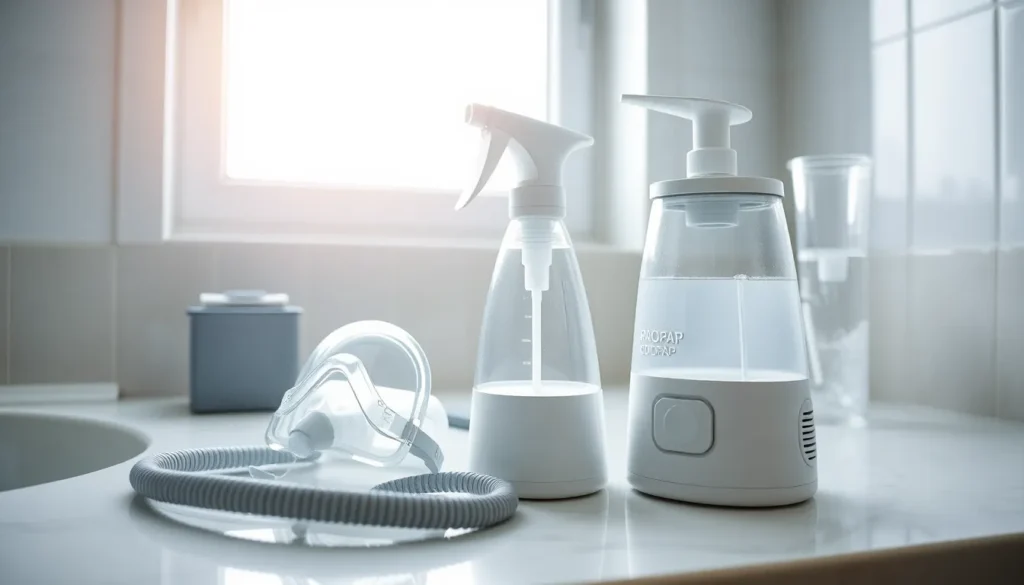Table of Contents
ToggleIn today’s digital age, technology is woven into the fabric of everyday life. While it offers countless benefits, excessive screen time and poor tech habits can lead to negative impacts on health and well-being. Finding a balance is crucial for maintaining a healthy relationship with devices and ensuring they enhance rather than hinder daily life.
Adopting healthy tech habits can transform how individuals interact with technology. From setting boundaries on device usage to prioritizing mental breaks, these habits foster a more mindful approach to technology. By embracing these practices, anyone can improve focus, boost productivity, and ultimately lead a more fulfilling life in a tech-driven world.
Importance Of Healthy Tech Habits
Healthy tech habits play a crucial role in overall well-being. Maintaining these habits helps mitigate the adverse effects of excessive screen time. Excessive device usage can lead to physical issues such as eye strain, poor posture, and disrupted sleep patterns. By implementing healthy tech practices, individuals can counter these health risks effectively.
Healthy tech habits enhance emotional well-being. Excessive engagement with technology often results in anxiety and loneliness. By setting boundaries around screen time and communication, individuals can foster more meaningful real-life interactions and improve mental health.
Improved productivity stems from healthy tech habits. Taking regular breaks and establishing usage limits can enhance focus and concentration. Structured tech usage leads to more efficient work patterns, allowing for better task management and a more balanced life.
Encouraging healthy tech habits also promotes a sustainable lifestyle. By engaging thoughtfully with technology, individuals can cultivate a mindful relationship with digital devices. This consciousness encourages users to prioritize important tasks and reduce unnecessary distractions.
Ultimately, individuals benefit from adopting healthy tech habits in multiple aspects of their lives. Nurturing a balanced approach contributes to better physical, emotional, and mental health. Healthy tech habits support productivity while fostering a more fulfilling and sustainable relationship with technology.
Understanding Healthy Tech Habits

Healthy tech habits encompass mindful practices that enhance the relationship between individuals and technology. These habits help promote overall well-being and effectiveness in daily life.
Defining Healthy Tech Habits
Healthy tech habits include specific actions and routines that optimize technology usage while minimizing negative effects. Some key components include:
- Setting daily limits: Establish maximum screen time for recreational activities, such as gaming or social media.
- Designating tech-free zones: Create areas, like bedrooms or dining rooms, where devices aren’t allowed to encourage personal interactions.
- Incorporating breaks: Schedule regular intervals to step away from screens to reduce fatigue and improve focus.
- Curating content: Choose engaging and educational material that fosters positive mental and emotional experiences.
Benefits Of Healthy Tech Habits
Adopting healthy tech habits offers numerous advantages, which include:
- Improved focus: Limiting distractions from notifications allows for greater concentration on tasks at hand.
- Enhanced emotional well-being: Reducing screen time can lead to lower levels of anxiety and improved mood through increased face-to-face interactions.
- Better sleep quality: Avoiding screens before bedtime contributes to improved sleep patterns, helping to maintain energy levels.
- Physical health benefits: Reduced risk of eye strain and musculoskeletal issues emerges through mindful device usage and proper ergonomics.
Implementing these habits fosters a balanced approach to technology, enhancing individual productivity and overall quality of life.
Strategies To Develop Healthy Tech Habits
Individuals can adopt practical strategies to cultivate healthy tech habits that promote well-being. Implementing clear guidelines around technology use supports a balanced lifestyle.
Setting Device Boundaries
Setting device boundaries involves determining specific limits for technology use. Daily screen time goals can be established, such as two hours for recreational use or one hour for social media. Creating tech-free zones, such as bedrooms or dining areas, encourages technology-free interactions. Scheduling device check-ins can also help manage usage; for instance, users can plan to check emails every two hours instead of continuously.
Using apps to track screen time provides insights into usage patterns, allowing users to identify triggers for excessive use. By prioritizing important tasks during focused periods, individuals maintain attention on critical activities. This structured approach enhances productivity and reduces the risk of burnout.
Incorporating Digital Detoxes
Incorporating digital detoxes means intentionally stepping away from technology for designated periods. Individuals can start with short intervals, such as a few hours each weekend, gradually extending this practice to full days or even weeks. These detoxes allow time for mindfulness, self-reflection, and engaging in physical activities.
Scheduling regular tech-free activities—like hiking, reading, or socializing without devices—fosters deeper connections and enhances emotional well-being. During detoxes, individuals can use the opportunity to explore hobbies or interests neglected due to excessive screen time. Tracking feelings and insights gained during these breaks can highlight the benefits of reduced technology dependence.
Adopting these practices cultivates a balanced relationship with technology and enhances overall health and productivity.
Creating A Healthy Tech Environment
Creating a healthy tech environment involves optimizing the physical and social aspects of technology use. Implementing effective strategies promotes well-being and enhances productivity.
Ergonomic Setups
Ergonomic setups play a crucial role in ensuring comfort and reducing strain during technology use. Individuals can enhance their workspace by following these guidelines:
- Desk height: Adjust desk height so arms rest comfortably at a 90-degree angle.
- Chair support: Choose an adjustable chair that supports the lower back and encourages proper posture.
- Screen position: Place the monitor at eye level to avoid neck strain, positioning it about an arm’s length away.
- Keyboard placement: Position the keyboard close enough to prevent reaching, with wrists straight while typing.
- Breaks and stretches: Schedule short breaks every hour to stand, stretch, and reduce tension.
Family Tech Rules
Establishing family tech rules fosters a balanced approach to technology in the household. Clear guidelines encourage mindful usage and strengthen relationships. Consider these practices:
- Screen time limits: Set daily screen time limits for each family member based on age and activity, ensuring a healthy balance.
- Tech-free zones: Designate specific areas, like the dining room or bedrooms, as tech-free zones to promote uninterrupted family interaction.
- Shared device time: Schedule family device time, allowing everyone to engage with technology together or support collaborative activities.
- Encourage alternatives: Promote non-digital activities, like outdoor play or board games, to balance screen use, enhancing physical and emotional connections.
- Regular family discussions: Facilitate open discussions about technology use, encouraging family members to share thoughts, feelings, and experiences related to their digital habits.
Implementing these strategies helps create a healthier tech environment that supports well-being and fosters meaningful connections.
Overcoming Common Challenges
Maintaining healthy tech habits can pose challenges. Individuals often face distractions and addictive behaviors that hinder their ability to engage mindfully with technology.
Dealing With Screen Addiction
To combat screen addiction, individuals can implement several strategies. Setting clear screen time limits aligns usage with personal goals. Scheduled breaks enable regular disconnection from devices. Engaging in offline activities, like exercise and reading, fosters interests beyond screens. Attending workshops or support groups focused on technology reliance may also promote accountability and provide coping strategies.
Managing Notifications
Managing notifications effectively significantly reduces distractions. Individuals can customize notification settings to prioritize essential alerts while silencing non-essential ones. Utilizing ‘Do Not Disturb’ modes during designated focus times helps maintain concentration. Regularly reviewing and decluttering apps can limit unnecessary communication. Scheduling specific times for checking messages rather than responding immediately allows for increased productivity and reduced interruption in daily tasks.
Adopting healthy tech habits is essential for navigating today’s digital landscape. By setting boundaries and taking regular breaks, individuals can foster a balanced relationship with technology that enhances their overall well-being. These practices not only improve focus and productivity but also promote emotional health by encouraging meaningful interactions.
Creating a supportive tech environment and managing distractions can further amplify the benefits of mindful technology use. Embracing these habits leads to a more fulfilling life, allowing individuals to reconnect with their passions and prioritize what truly matters. Prioritizing healthy tech habits is a proactive step towards a healthier and more productive lifestyle in an increasingly connected world.





